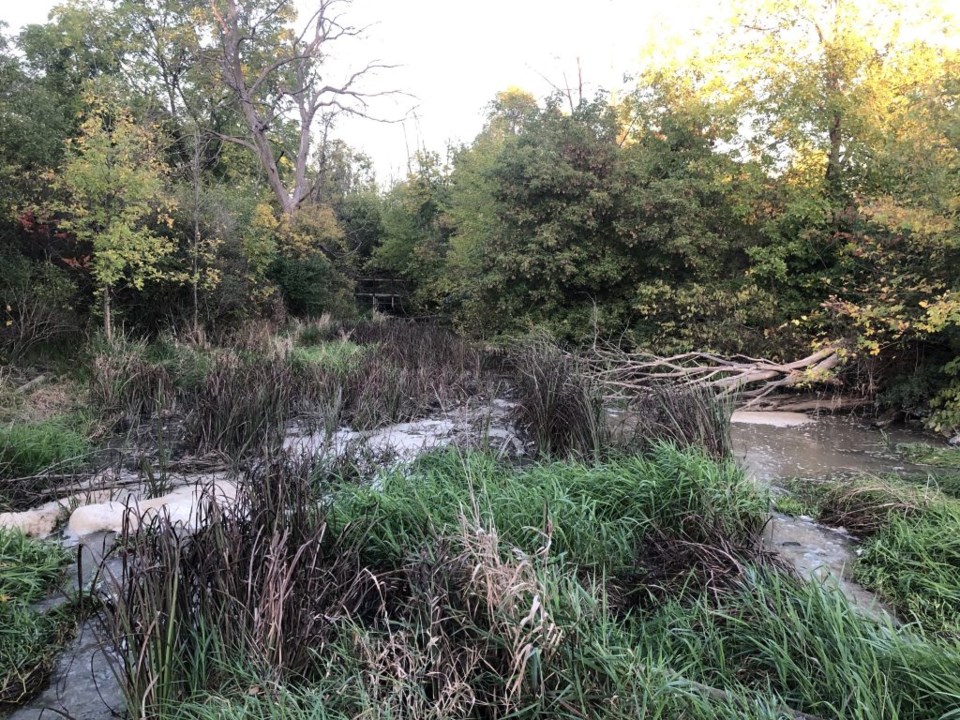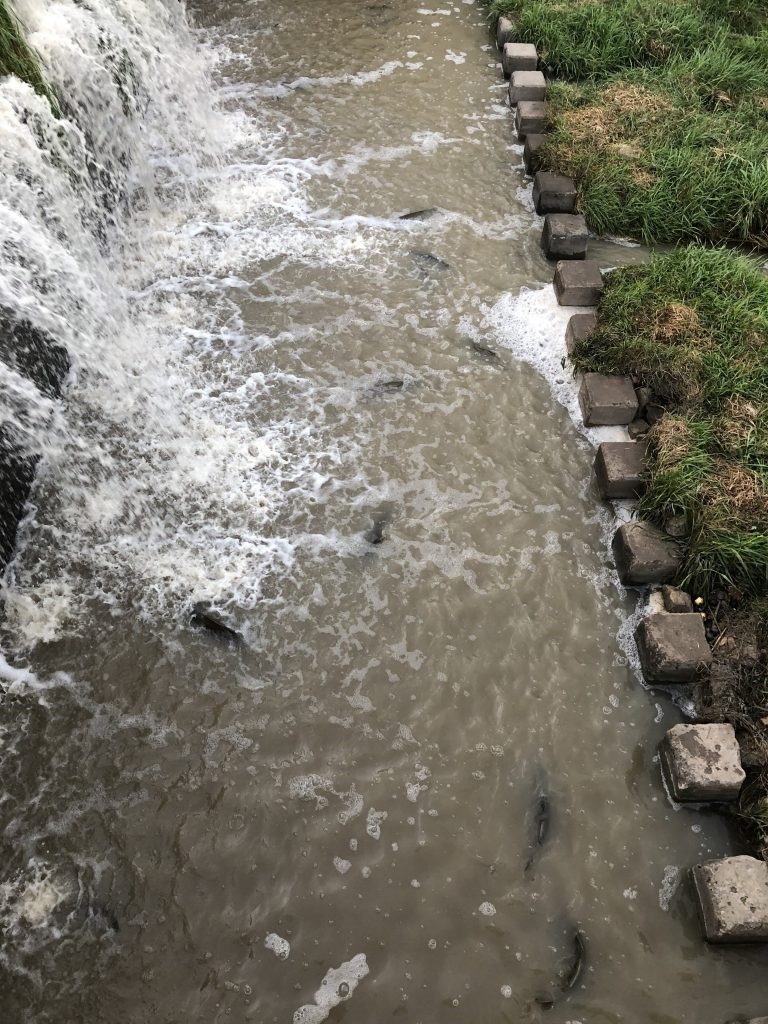
I’m standing at the base of the Virgil reservoir’s north dam. I hop over some matted grass, mud, and find myself balanced on some concrete pillars. Beneath my feet flows a torrent of brown water and a forlorn group of salmon.
Smack! A giant fish measuring two feet in length leaps out of the water, airborne with grace, met by a wall known as the Virgil Dam. The fish does not know the name of this manufactured structure, how high it is, or that it was implemented decades ago to allow farmers to pump water from Four Mile Creek for irrigation purposes.
The sound was symbolic of the blockade, a smack in the face to the various species of salmon which annually and instinctively migrate upstream from Lake Ontario every September to November. It was disheartening to watch this dead-end moment for these fish, which follow their behavioural blueprint to press upstream and spawn their eggs in sandy gravel banks every fall.
Historically, prior to overfishing plus habitat destruction of Lake Ontario’s wild streams, Atlantic salmon were once densely populated in what was formerly known as Lake Iroquois, where the fish were numerous enough to reliably feed the Indigenous peoples of the lands. In modern times, Lake Ontario has been restocked with Atlantic, pink, Coho, and Chinook salmon in an effort to boost the population of this ecologically influential species.
Recently I had the opportunity to sit down with Brett Ruck of the town of NOTL, and Dr. Bill Rapley to discuss the future of Four Mile Creek and its road to recovery. Ruck presented some fresh ideas surrounding the two Virgil dams, and how they could become focal points for various environmental improvement.
Like people, when ecosystems hit rock bottom, there is only room for improvement and leading by example. Some new ideas have been floating around like the salmon were floating around the base of the dam.
Four Mile Creek is the centre of attention in NOTL’s watersheds, faced with poor water quality reports, flooding issues, and reductions of habitat. It is also our municipality’s largest watershed in both length and volume. I hope it continues to be the centre of attention in a positive light, because here is what may be flowing down the hatch.
As presented by Ruck and Rapley at our most recent Environmental Advisory Committee meeting, to which I was glad to contribute to the discussion, there could be newly created islands within the reservoir which serve to enhance biodiversity by means of forming habitat diversity for birds, reptiles, and amphibians.
There is a vision for a fish ladder, which would facilitate the movement of salmon, rainbow trout, pike, suckerfish, and other fish species to migrate upstream. It is hard to imagine, but all of these species once reached the base of the Niagara Escarpment in their respective spring or fall journeys.
Additionally, there is potential to add sediment filters upstream of the dams in order to capture the excess solid particulate which enters and ultimately fills the reservoirs, hence why they are so shallow and weighed down by stinky muck. A noteworthy feature of these filters is that they can be cleaned and reused, over and over again for time to come. We must ask, though, how did this mucky situation come about to begin with?
Dozens upon dozens of private properties upstream border Four Mile Creek without an ecologically sound setup. With the historic and current removal of creekside habitat, also known as riparian habitat (the vegetation and wooded plant communities which border a waterway), there is no effective filter for sediment, pollutants, and excess nutrients such as phosphorus and nitrogen from entering the creek.
Given that the vast majority of land in NOTL and southern Ontario alike is private property, that means that there is a certain power in the hands of those private property owners. If you are a NOTL local with land bordering one of our creeks, you have potential to enhance your property value while also improving the water quality of our largest stream system.
I fantasize about these property owners stepping up to the plate, and saying, “Hey, I have a bunch of land which borders the creek, and I am open to participating in a tree planting or habitat restoration program which will benefit biodiversity and water quality.”
When someone like that says the word, I further imagine the town, the Niagara Peninsula Conservation Authority, and potential partners such as Ducks Unlimited jumping in, and saying, “Hey, we have the funds, the means, and the resources. Let’s rebuild the riparian habitat so less sediment enters the creek, and it can become a cleaner waterway for recreational, educational, and ecological benefits alike.”
The power of private property is a hidden conversation tool in plain sight. If the organizations and powers that be can show local citizens that it is worth their while, I think we’d be pleasantly surprised at how many people would be on board with saving Four Mile Creek.
My only words of encouragement from both a citizen and biology perspective is this: let’s not wait one year, two, or 10 years to engage potential stakeholders. Let’s make the effort to move now and realistically show that NOTL can lead by example, in doing what is right for the most important resource we have on the planet — fresh water.
Time is always of the essence, and I would hate to see bureaucracy thwart the outcomes of such a bold and impressive community initiative.
